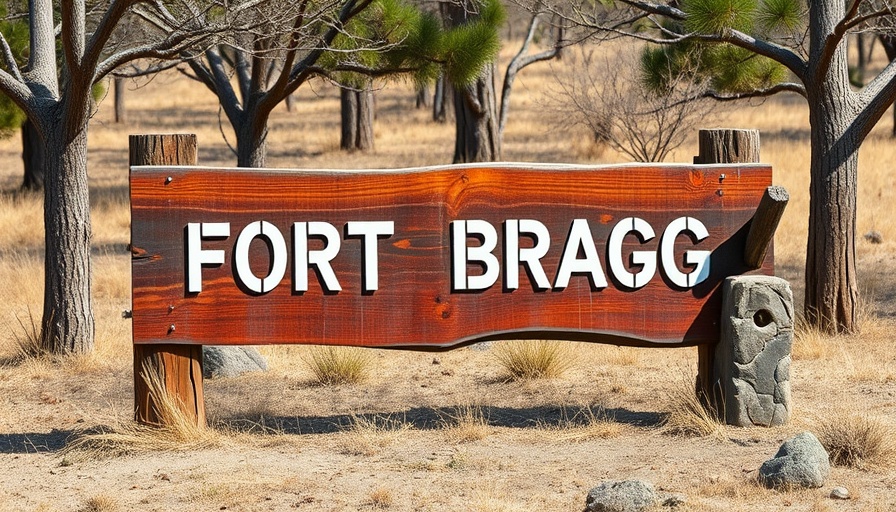
The Return of Fort Bragg: A New Chapter in Military Naming
Fort Bragg, a prominent U.S. Army installation in North Carolina, has made headlines again with the Pentagon's recent decision to reverse its renaming to Fort Liberty back to its original name. This change, announced by Defense Secretary Pete Hegseth, comes amid a broader discussion surrounding military installations that have ties to Confederate leaders. The name change, however, will honor a new figure - Private First Class Roland L. Bragg, a WWII hero, rather than the controversial Confederate general after whom it was originally named.
Unveiling the New Namesake
PFC Roland Bragg, who earned a Silver Star and Purple Heart during the historic Battle of the Bulge, is emblematic of a new narrative that honors heroic deeds while reflecting on America's complicated history. The Pentagon's move to rename Fort Bragg after Bragg marks not just a significant tribute to a talented soldier, but also a shift in how we memorialize our military heroes. By doing so, the Department of Defense is reinforcing a commitment to recognize the sacrifices made by service members who fought for freedom rather than oppression.
Historical Context: From Confederate Icons to Heroes of Valor
The renaming of Fort Bragg fits into a nationwide trend that began gaining momentum after the protests against racial injustices spurred by the death of George Floyd in 2020. It highlighted an awakening about how public spaces and symbols reflect our values and national identity. Previously named after Brigadier General Braxton Bragg, who fought for the Confederacy, the installation was caught in a historical conflict, now resolved by officially replacing the former namesake with a service member who exemplified bravery and selflessness.
Financial Implications of Name Changes
Changing the name back to Fort Bragg isn’t just a sentimental decision — it's also a financial one. The prior name alterations resulted in a significant expenditure of more than $20 million, as extensive renovations and rebranding were required. With the name set to change again, similar costs are expected for repainting signs and administrative adjustments. This raises an important question: are these financial resources being used wisely in a time when military budgets face scrutiny and debate?
The Future of Military Naming Conventions
Defense Secretary Hegseth’s declaration may signal a trend in the Army’s naming conventions, prompting discussions about which bases could be next for renaming, as he hinted that many other installations could follow suit. The focus seems to be shifting toward names that embody values of courage and service rather than those that represent a painful past. This potential initiative aligns with a growing recognition of the need for inclusivity and respect for the diverse experiences of all Americans in military history.
As these changes unfold, they attract both supporters and critics, igniting fiery discussions about tradition, military legacy, and what it means to honor service in the United States today. The narrative around Fort Bragg's renaming turn echoes throughout the country as communities begin to grapple with updating their memorials in line with contemporary values.
 Add Row
Add Row  Add
Add 




Write A Comment